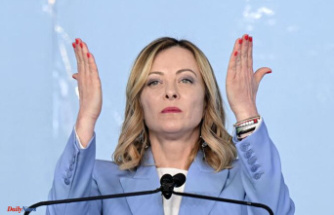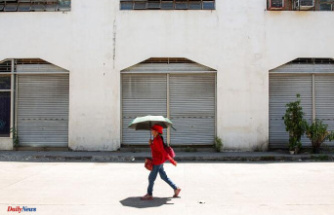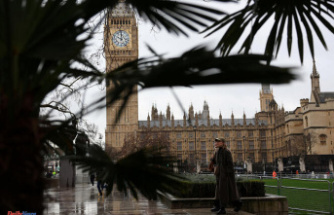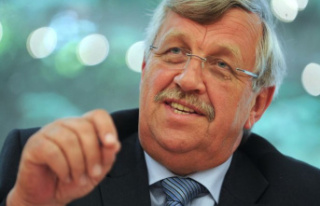Bapir Kalkani, an agricultural trade unionist, sets the scene in this region of northern Iraq. In 2019, "there was water where I am. It went up three kilometers higher. But it withdrew", warms Mr. Kalkani, 56 years old.
Under the blazing sun, sesame and beans occupy the plain. At the end of this false flat is the large artificial lake created in the 1950s after the construction of the Dukan dam for the irrigation and drinking water needs of the region, and to produce electrical energy.
This dam cuts the Little Zab, a tributary of the Tigris River, which originates in neighboring Iran. But for several years, the little Zab has been shrinking like all Iraqi rivers, and the lake too.
Iraq is presented by its leaders as one of the five countries most vulnerable to the effects of climate change and desertification.
Water reserves have fallen by 60% compared to last year, according to the Iraqi government. With the collapse of rainfall and three years of successive droughts, Iraq was forced to halve its cultivated agricultural areas.
On the shores of Lake Dukan, Bapir Kalkani laments: "If it hadn't been for a little rain in late spring, there would have been no agricultural crops in Kurdistan this year". Before, farmers dug shallow wells fed by the Dukan to irrigate. Not anymore. "The wells have lost 70% of water," says Mr. Kalkani.
- Sesame seeds -
Shirko Aziz Ahmed irrigates his sesame field. He had to drill a well several meters deep from which the water is pumped by a diesel engine. "The sesame seeds need nine waterings. So I'm going to dig even more because the water level is going down," he sighs.
But the drought is not the only culprit.
Iran has built several dams on its portion of Little Zab. In particular that of Kolsa "which caused an 80% drop in the level of the little Zab", explains Banafsheh Keynoush, of the Middle East Institute, a research center based in Washington.
Iran is facing "one of the worst droughts in its history" and has reviewed its irrigation system, a project that includes "the construction of many small dams", she explains.
The Dukan dam is also suffering from the drop in the flow of the little Zab, assures its director Kochar Jamal Taoufiq: "The dam is now only at 41% of its capacity". It releases drinking water "for three million people, in particular (in the urban basins of) Souleimaniyeh and Kirkuk", downstream.
But at just 300mm, compared to the annual average of 600mm, rainfall has not been generous in 2021. And 2022 is on track to resemble the previous year, Taoufiq says.
“We release 90 cubic meters of water per second, compared to 200 to 250 when the reservoir is full,” he says. Consequence: farmers are ordered to grow plants "that do not consume too much water".
- New dams -
As for the Iranian dams which "reduce the flow" of the little Zab, Baghdad "sent delegates to Iran, but I heard that the Iranians were not cooperative", observes Mr. Taoufiq.
Tehran assures that the rivers coming from Iran contribute "about 6%" to the Tigris and Euphrates basin, underlines Banafsheh Keynoush. "So Iran is saying to the Iraqis: settle your problems related to the Tigris and the Euphrates with Turkey", where the two rivers originate.
But Iraq is not exempt from criticism, believes Azzam Alwash, founder of the NGO Nature Iraq and adviser to the Iraqi president.
Iraqi Kurdistan intends to embark on the construction of new dams to "ensure water security". However, these projects are drawn up "without coordination between Kurdistan and the central government in Baghdad", laments Mr. Alwash.
Downstream, in central and southern Iraq, "the lack of coordination and modernization of the irrigation system will result in a disaster" with water shortages even more serious than those already affecting these areas, he predicted.












